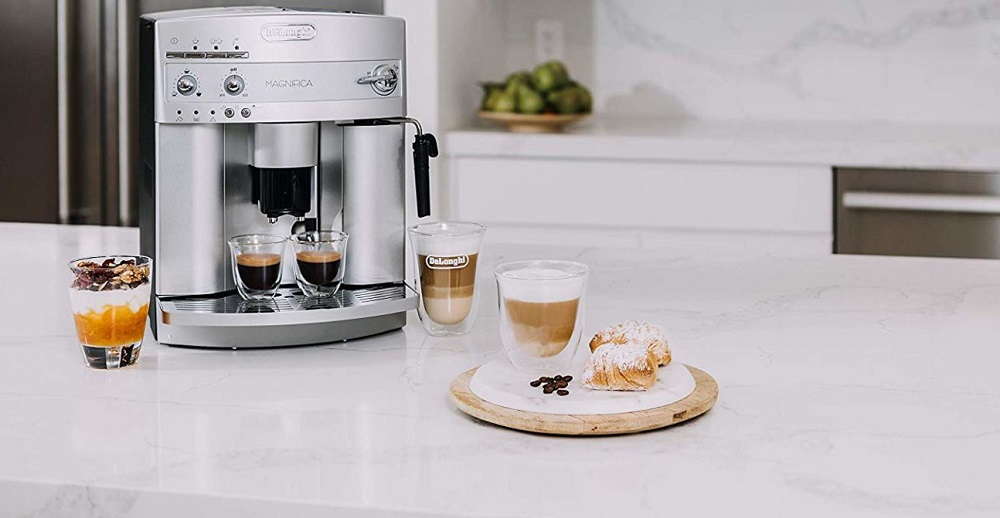

Machines under $1,000 are commonly single-boiler, dual-use setups: because these use a single thermostat to control the water temp (switchable from one boiler to the other at the user’s behest), these machines can’t brew and steam milk simultaneously. But if you plan on making drinks like lattes and cappuccinos, you’re going to need that wand, and perhaps even a dual boiler to properly heat your espresso and milk at the same time - a godsend when making drinks for a crowd. If you’re only interested in espresso shots and Americanos, then you won’t need to worry about getting a machine with a steam wand. Perhaps the main question you’ll need to ask yourself before purchasing an espresso machine is what type of drinks you’re going to make with it. Super-Automatic: Super Automatic machines, sometimes referred to as all-in-one espresso machines are fully-automatic machines that have all the bells and whistles, like a built-in grinder and other related gadgets, incorporated into a single machine.
Best automatic espresso machine under 2000 full#
It is often the case that full automatics include redundant semi-automatic controls. Because operators can decide when to turn the pump on and off (hence “semi” automatic), and because boiler temperature controls are automated on these makers, this is the most popular type of traditional machine in use today.įully-Automatic: Fully-Auto machines are very similar to semi-auto machines but include an electronic nanny to regulate the amount of water passing through the espresso. Semi-Automatic: Semi-Auto espresso makers came to be thanks to Achilles Gaggia’s 1938 patent, which introduced electric pumps to devices, resulting in even, hands-free water pressure.

Best automatic espresso machine under 2000 manual#
For that reason, we’re not recommending any true manual machines in this guide, and instead will use the term to refer to machines that give the user some control over their shot (a definition used by manufacturers like De'Longhi.

In short, these machines should be considered by experienced home baristas only. They don’t maintain constant water pressure on their own, users must push water through the coffee manually, which can vary the quality of the final product. Manual: True manual espresso machines are lever operated. Technically, each of these terms has a strict definition, but in practical terms, they’re a bit more wishy-washy, with various brands and retailers using some terms interchangeably. Traditionally, there are four types of espresso machines: manual, semi-automatic, fully-automatic and super-automatic. Unfortunately we do not have control over these cookies, in this case you should refer to the list of cookies on this page which provides further details.What to Look for in an Espresso Machine Types of Espresso Machines We have taken steps to try to ensure that the cookies being used fit the descriptions used above and that the ‘Accept’ or ‘No thanks’ selection will honour your wishes but some third party cookies may still get downloaded. They remember that you have visited a website and this information is shared with other organisations such as advertisers. They are usually placed by advertising networks with the website operator’s permission. Used to deliver adverts more relevant to you and your interests. It is only used to improve how a website works. All information these cookies collect is aggregated and therefore anonymous.

These cookies don’t collect information that identifies a visitor. Collect information about how visitors use a website, for instance which pages visitors go to most often, and if they get error messages from web pages.


 0 kommentar(er)
0 kommentar(er)
